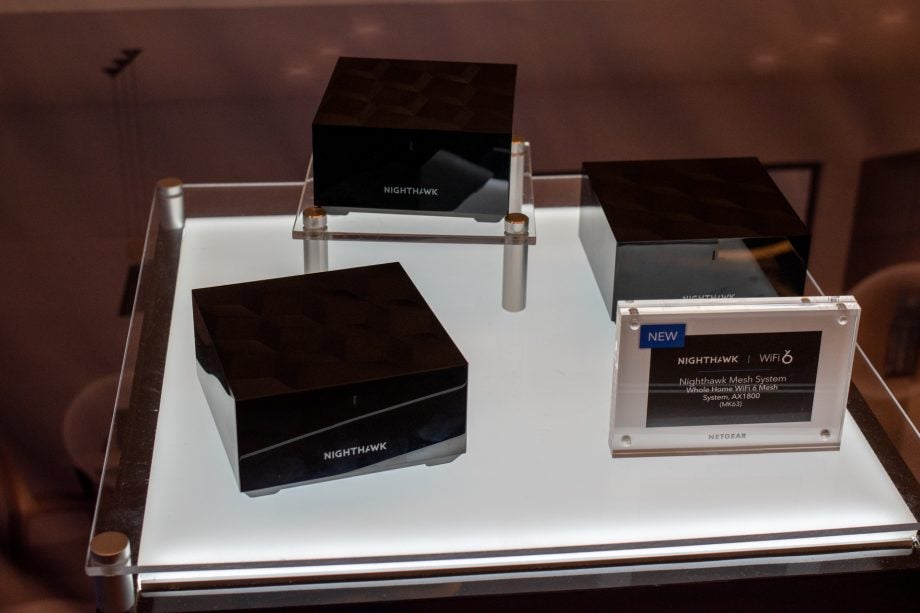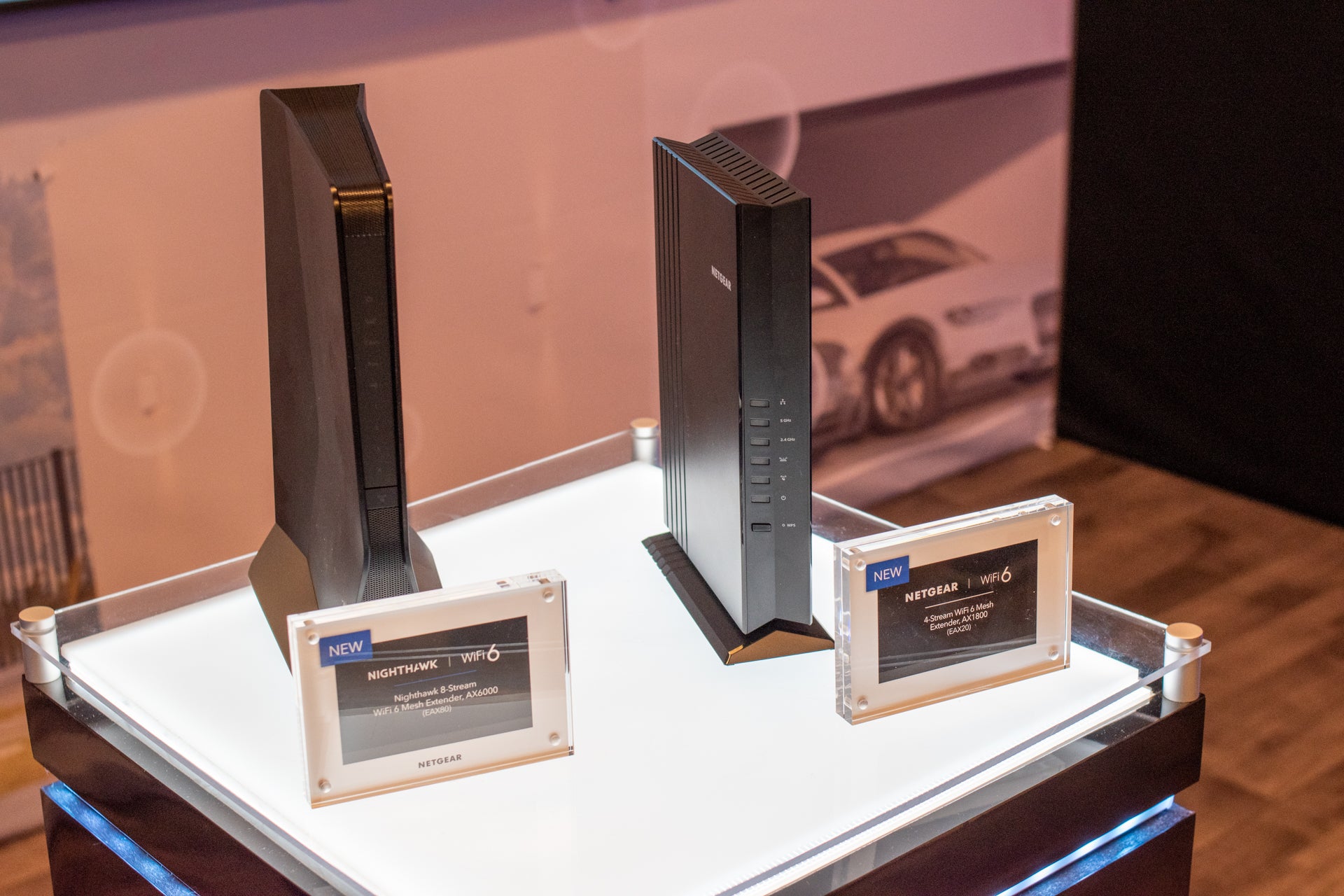Netgear pushes Wi-Fi 6 with new low-cost Nighthawk Mesh systems | CES 2020

Wi-Fi 6 adoption is picking up pace, with the new networking standard making it into more and more new phones and laptops. To start using these devices to their maximum means upgrading your Wi-Fi at home, which can be expensive if you want to go with a mesh system, with the likes of the Orbi WiFi 6 costing upwards of £700.
At CES 2020, Netgear has announced a new range of Wi-Fi 6 wireless mesh systems, available for more pocket-friendly prices. For those looking to replace their existing router entirely, there’s the new Nighthawk Mesh WiFi 6 System, which is available as both a two-device (MK62, £229.99) and three-device (MK63, price to be confirmed) system.
Related: What is Wi-Fi 6?
Small cubes with a funky cubed design on top, the Nighthawk Mesh WiFi 6 System is a neater and smaller way of getting Wi-Fi 6 than the much large Orbi system. However, to get the price down, you miss out on some features compared to the Orbi.
With the Nighthawk Mesh WiFi 6 System, the router has a single Gigabit Ethernet for the WAN connection (the Orbi has a 2.5Gbit/s port), and only one additional Gigabit Ethernet port for wired devices (the Orbi router has four). If you’ve got more devices, you’ll definitely need to buy an additional Gigabit Ethernet switch.
The satellites only have a single Gigabit Ethernet port, too, so you may need another switch (the Orbi satellites have four Gigabit Ethernet ports).
In terms of Wi-Fi, the Nighthawk Mesh WiFi 6 System is a touch slower than its big brother. Its dual-band Wi-Fi gives you two 2.4GHz streams for 600Mbit/s in total, and two 5GHz streams for 1200Mbit.s in total. This model doesn’t have a dedicated third wireless channel for the backhaul (the communication between satellites), so the existing wireless has to be shared.
In comparison, the Orbi WiFi 6 has four 2.4GHz channels at a total of 1200Mbit/s, four 5GHz channels at a total of 2400Mbit/s, and a dedicated 5GHz backhaul also running four channels at 2400Mbit/s.
So, what does this mean? In basic terms, it means that the Nighthawk Mesh WiFi 6 System can’t deliver the maximum throughputs of its big brother if a client with sufficient streams connects, and it means that the new mesh system has fewer streams and less bandwidth to share. Performance will be slower, but that doesn’t mean that it will be bad. In fact, look at the Google Nest WiFi and you can see that this older Wi-Fi 5 standard mesh is faster than the original Google WiFi system, and it doesn’t have a dedicated wireless backhaul channel.
We’re expecting a Nighthawk Mesh WiFi 6 System review unit in early February, so can put the system through its paces to see how it performs.
Joining the Nighthawk Mesh WiFi 6 System is the Netgear AX1800 Wifi 6 Mesh Extender (EAX20). This is a standalone device that is built to work with your existing router, creating a mesh network with it. So, while your existing router may only be a Wi-Fi 5 model, you can add Wi-Fi 6 into the mix with this extender, which runs using the same network name and password.

THe EAX20 supports the 802.11k standard, so devices that also support this can use seamless roaming. Traditionally a wireless device will try and hold onto a signal for as long as possible; with 802.11k, devices are made to connect to the strongest access point, increasing performance, particularly with portable devices that you move around with, such as phones.
As with the Nighthawk Mesh WiFi 6 System, the EAX20 has two 2.4GHz streams running at a total of 600Mbit/s and two 5GHz streams running at a total of 1200Mbit/s. The wireless connection to the router is run using these, too, and there’s no dedicated wireless connection for the backhaul. The EAX20 is due to go on sale shortly and will cost £129.99.


